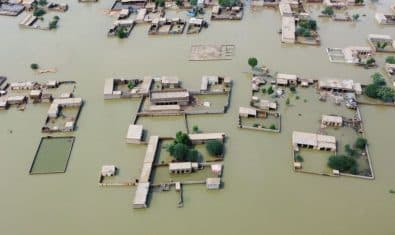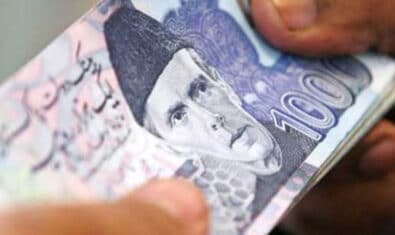Pakistan lags behind in mobile internet access across the country with a lower score than South Asian and other competing countries, said GSMA’s report “Pakistan progressing towards a fully-fledged digital economy.”
Countries such as Iran, Nepal, Uzbekistan, Sri Lanka are far ahead of Pakistan in terms of mobile internet penetration.
The delay in the launch of the 3G and 4G services in the country left Pakistan behind the competing countries in the region. Pakistan once led progress in the region with the highest teledensity in South Asia till 2007, and gradually slowed down in the development of telecom and its related services, particularly broadband internet.
Pakistan scored 39.8 in the GSMA’s latest Mobile Connectivity Index, compared to an average of 45.7 for South Asia.
According to GSMA, the penetration of mobile internet in Pakistan stands at 26%, with a 54% percent untapped market, and a 2% uncovered area due to the slow expansion of network infrastructure in the country.
On the contrary, the average penetration rate of mobile internet stands at 33% in South Asia, with 56% coverage, and 11% uncovered area of mobile internet services.
Lower Smartphone Adoption
Initially, the adoption of smartphones in Pakistan was relatively low due to affordability and higher tax however it picked up the pace in the later years.
In the last two years, the number of smartphone connections in Pakistan has nearly doubled, reaching 81 million by the end of 2019.
The rising smartphone adoption means more people are able to use feature-rich digital content on their mobile phones, mitigating the challenge of much lower penetration of PCs and other data-enabled devices.
Handset prices remain expensive though, with Pakistan ranked 98th out of 121 countries – below Bangladesh and Sri Lanka – for this metric by the Network Readiness Index 2019.
The situation should be ameliorated following the government’s decision in January 2020 to reduce income tax, sales tax, and customs duty on imported mobile phones.
Consumers Migrating to Mobile Internet Broadband
There were 76 million mobile broadband connections in Pakistan, accounting for 46% of total connections by the end of 2019.
Widening network coverage and the increasing adoption of smartphones are helping bring mobile internet services to people across the country.
With 4G entrenched as the dominant technology in developed Asia, Pakistan’s own growth rate is slowing: catching up with regional pioneers will mean connecting the unserved in remote and sparsely populated areas. To this end, the government has tasked the organization responsible for managing the universal service fund (USF) with extending broadband networks to every corner of Pakistan to connect those currently without access.
Major Issues and Challenges
If internet access is to be made a fundamental right, the government in Pakistan must take urgent action to remedy the country’s regressive tax regime. The biggest supply-side impediment to data usage currently is high device taxation, including customs duties, mobile handset levies, and sales taxes.
Together, these can put higher-end handsets out of reach for many citizens, which is reflected in the significant proportion of basic, voice-only devices in the market. Getting affordable smartphones into peoples’ hands prompts the first chapter in the internet adoption story for non-users. As their confidence and knowledge build, users will consume more data-intensive applications and access the platforms that will connect them to the wider digital economy.
Pakistan is an emerging mobile economy, with digital technologies beginning to transform the way people live and work. For a growing number of citizens, digital platforms have become the primary channel for accessing public and private services – a trend particularly evident in the retail, transport, and banking sectors.
However, Pakistan still has a sizable ‘coverage gap’ and lags behind peers in certain areas; for example, mobile broadband accounts for less than five in 10 mobile connections.
Mobile connectivity is generating profound benefits globally, helping to promote digital inclusion and support the delivery of key public policy initiatives. However, 18% of Pakistan’s population is not covered by a mobile broadband network, hampering participation in society and limiting contribution to the economy.
For operators, the high upfront investment required to deploy mobile infrastructure and the long repayment cycle present risks and challenges. Network sharing can lower the cost of expanding mobile broadband coverage in remote areas by allowing operators to jointly use masts, buildings, and antennas, creating efficiencies. It also reduces commercial risks due to co-investment and the revenue opportunities of extending services to new locations.






















Indeed they are very slow in the spread of reach. They need to work a lot. Leave rest aside even in a neighborhood like Islamabad (THE CAPITAL OF THIS COUNTRY), there are many areas where I tested myself that are with no internet ISP. Even Zong is failing to provide 4G there….